The best things to do in the Netherlands
When you picture The Netherlands, a few images probably come to mind: Windmills. Brilliantly colourful tulips, and shops that beckon to be explored. But this European country has so much more: Beautiful canals, historical architecture and museums that cater to every interest. Not to mention the food – everything from stroop wafels to delicious Gouda cheese.
With so many uniquely wonderful experiences to enjoy, it’s no wonder tourism in The Netherlands is growing and expected to soar over the next decade. According to The Netherlands Board of Tourism and Conventions, 18 million tourists from abroad visited the country in 2017. By 2030, that number is expected to hit 29 million.
If you’re looking to travel to The Netherlands on a budget, we’ve got good news – we’ve put together some tips based on our personal experiences and research of the best travel bloggers who’ve covered one of the hottest destinations in Europe.

Geography
If you’ve never been to Holland or The Netherlands, the first thing you must know is that you’ll often hear these two terms used interchangeably. However, they’re actually different.
Holland is in The Netherlands and is actually divided into two provinces- North Holland and South Holland. Adding to the intrigue (and confusion) of this historic locale is that while Holland is a part of The Netherlands, it’s also used as a synonym for The Netherlands. The country is home to a breathtakingly beautiful landscape of colourful tulip fields, winding cycling routes, world famous canals and of course, the iconic windmills. Its transportation system is one of the best in the world.
Go for a bike ride through Rotterdam
The Netherlands is most vibrant and bustling throughout the spring and summer. The high season stretches from June to August. If you’ve got your heart set on a bike ride through the picturesque city of Rotterdam or spending the morning relaxing with your newspaper at a café terrace, this is the time to go as you’ll enjoy balmy temps.
Bonus: Everything is open. Keep in mind the famous museums will be packed with crowds and you’ll pay peak prices, so Lonely Planet says you should book ahead
During the “shoulder season” (April & May, September & October), you’ll find most sights open and the fewest crowds. Plus, prices are moderate and you’ll only need to book popular places in Amsterdam if you’re planning on sightseeing, says Lonely Planet. However, weather can be wet and cold. Bring warm clothes for outdoor cafés.
In contrast, you’ll find many sights outside the major cities close during the low season of November to March, and weather can be chilly and snowy (cyclists beware), but deals abound.
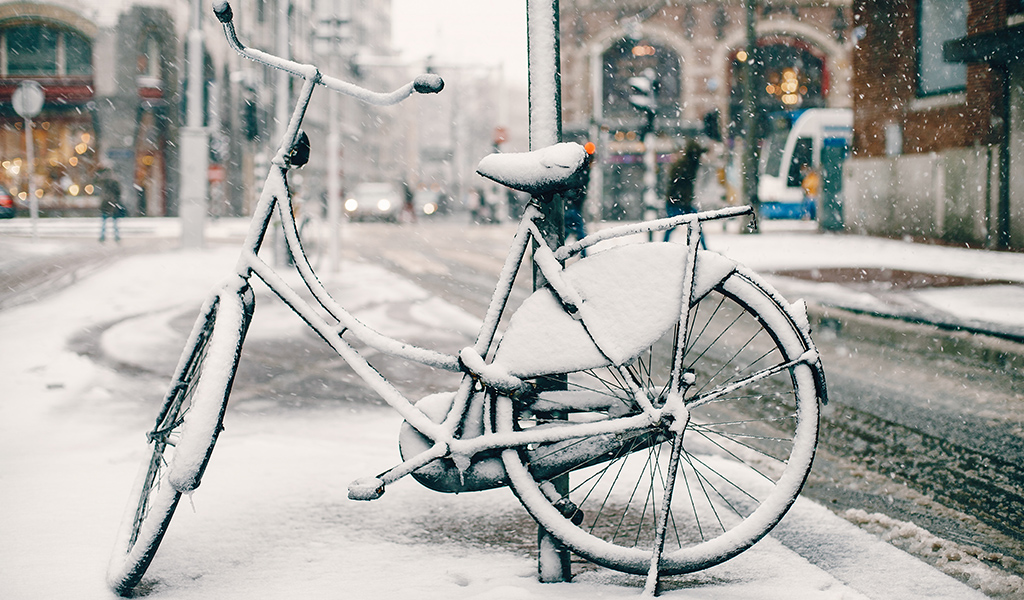
Stick to Airbnbs, hostels and budget hotels to save on accommodations
Costs for accommodation vary wildly depending on where you want to stay. Here’s what Nomadic Matt says you should budget for different types of Airbnbs, hostels or budget hotels. If you’re hoping to stay in Amsterdam, expect to pay more for each of these options:
Airbnb
Average about 15 euros (€) per night for a shared room; €50 to €60 euros per night for entire homes, including studio apartments.
Hostels
Typically €15 to €30 per night per dorm room (If you’re looking for a private room, make that €60 to €80 per night per two-person room, and add €20 to that in Amsterdam).
Suggestion: The Flying Pig Downtown, St. Christopher’s at the Winston and The Meeting Point, all in Amsterdam.
Budget hotel
€50 to €60 per night for a private bathroom and wi-fi. If you go the hotel route, The Brave Dame has a list of budget-friendly hotels, including:
- Marnix Hotel (Amsterdam)
- Kingkool The Hague City Hostel (The Hague)
- Budget Hotel (Leiden)
- Hostel ROOM (Rotterdam)

Visa information
The Netherlands is a Schengen area country (Canadian citizens do not need a visa to travel within the Schengen area, but visa-free travel only applies to stays of up to 90 days in any 180-day period. Entry requirements vary depending on the type of passport you use for travel. Find out more about short stay visas and travelling between Canada & the Netherlands at Netherlandsandyou.nl.
Hop on a train, take the metro or rent a bicycle
Thanks to its highly populated cities and modern infrastructure, the Netherlands boasts one of the best, most reliable public transportation systems in the world, and the country has one of the most dense road networks. After touching down at one of the major airports, many look to the rail network to get around and even cycle between destinations.
Airports
Flying into The Netherlands, you’re likely to land in one of the country’s top five civilian airports:
- Amsterdam Airport Schiphol
- Eindhoven Airport
- Rotterdam The Hague Airport
- Maastricht Aachen Airport
- Groningen Airport Eelde
While it’s the most convenient airport to Amsterdam, Amsterdam Airport Schiphol is also less affordable choice, as some of the major low-cost carriers operate out of smaller airports. See TripSavvy’s list of Netherlands airports for details, pros and cons.
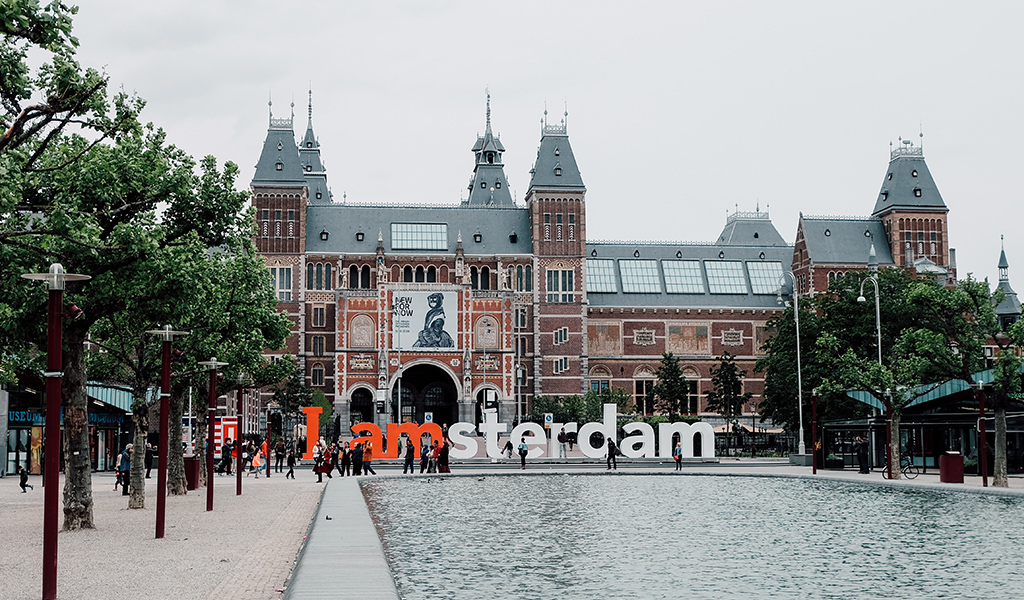
Pick up an OV Chipcard
You’ll want to buy an OV Chipcard (Chipkaart), which is like a fast pass or e-card you swipe as you board and leave to pay your fares on a bus, train or metro. You can get a personal OV Chipcard by applying and providing a photo. There’s also an anonymous one, which can be purchased at machines throughout the rail system. Top up your anonymous card (7,50) with €20.
Tips: Always keep your OV Chipkaart topped up. If you don’t have enough to pay for a fare, you could be fined triple the cost. – Netherlands Tourism
Take a train
Buy a day train card
Day train cards (dagkaart) are on sale at supermarkets and local shops, often for €15. If you have an OV Chipcard, you can also get an Advantage card (Dal Voordeel) for €50. Also check discount sites like spoordeelwinkel,, recommends DutchReview, which published a great guide to getting a cheap Dutch train ticket .
The national rail company NS (Nederlandse Spoorwegen) operates most of the trains in the Netherlands and you have a few different options when it comes to taking one, including:
Sprinter trains
These trains travel in short spurts, stopping at regular intervals in small towns (as well as the big stations) in between. If you need to get to a small town, this is your best option. But beware: Travel blogger Adventure Ellen says Sprinters chug along slowly. Plus, there are no bathrooms or wi-fi, and conductors always check tickets.
Her tip: Always wait the extra 10 minutes for the intercity.

Intercity trains
If you’re traveling from one city to another, intercity trains are your best and quickest option, says Amsterdam Tips. In contrast to the Sprinter, Intercity trains are faster and make limited stops between major cities. Many of these trains offer free onboard wi-fi and have live travel information screens.
There are distinctions between double-deckers (VIRM – Verlengd InterRegio Materieel), single-deckers (ICM – Intercitymaterieel), and Intercity Direct. Amsterdam Tips has a comprehensive guide to trains.
Other options for public transit
There are so many options for public transit in The Netherlands that we can’t explain them all in detail here. In a nutshell, in addition to trains you can also catch a tram or take the bus. Amsterdam and Rotterdam have underground metros, while other cities offer over-ground metros (both of which get packed in peak hours). There’s also the popular ferry/boat service.
Another option: Rent a bicycle. The Netherlands is a cyclist’s dream as bike lanes are generally separated from car traffic. Learn more from DutchReview’s in-depth guide to public transport in The Netherlands.
Just don’t take a taxi or Uber, which are both expensive, says solo travel blogger The Brave Dame.
Tip: Whether you’re driving or on foot, pay attention to cyclists and when crossing bike paths. While on foot, make sure you’re not inadvertently walking on a bike path. These commonly run alongside sidewalks and are not always clearly marked. – Government of Canada
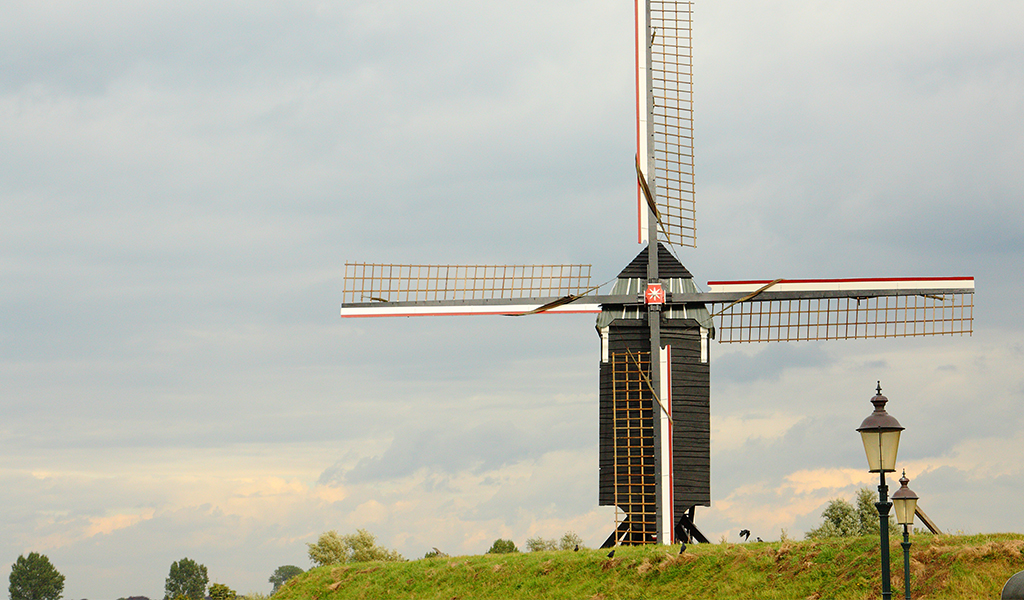
Check out street vendors, snack bars and food markets
A couple of the travel blogs we checked say to keep your expectations for Dutch food low, but that there are a few things worth munching on – you just have to know where to find them. The Brave Dame says to check street vendors or snack bars for patat (thick cut French fries), poffertjes (tiny, fluffy pancakes) or a delicious stroopwafel (syrup waffle).
Try a meal at any inexpensive chain restaurant, such as:
- Febo (fries and snacks)
- Wok to Walk (Noodles and other stir-fried stuff)
- Julia’s (Pasta)
You can also skip the chain restaurant route and visit Rotterdam’s food markets, as recommended by The Wanderlost Way. Markthal is a huge open marketplace with foods from all over the world.
There’s Gouda cheese, herring, Dutch apple pie (the quintessential Dutch dessert), and more delicious Dutch food to be found in Amsterdam.
Culture Trip has even more tasty delights you should keep an eye out for.
Tip: Offering criticism is more common than offering praise. Try not to take offense as the Dutch speak directly.
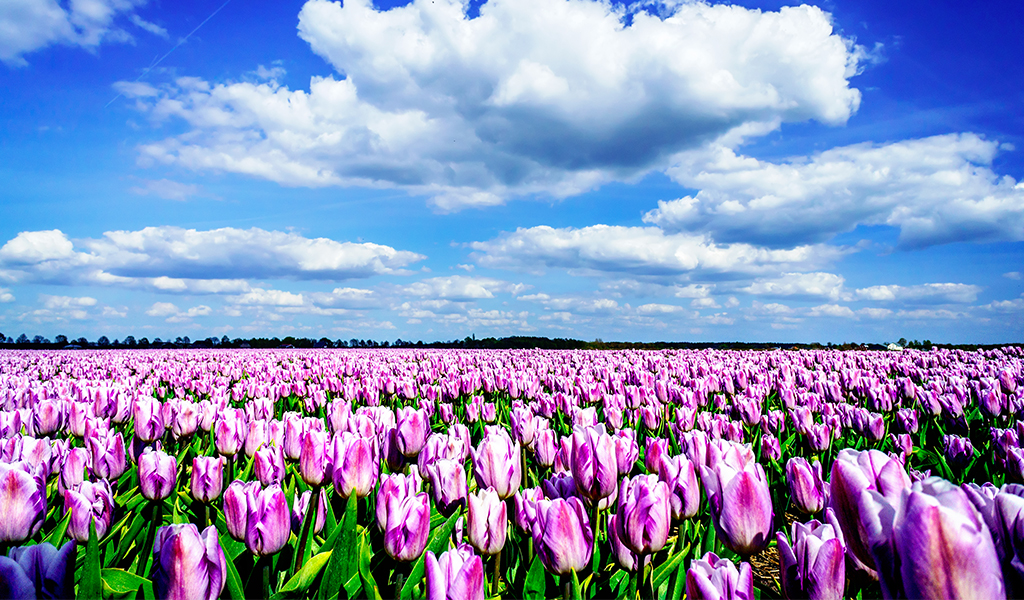
What to do
Stroll the tulip fields near Keukenhof
If you’re visiting between late March and early May (especially in April), you get a special treat – the opportunity to see iconic Dutch tulips in bloom! Although you can shell out €30 to see the fields at Keukenhof (the world’s largest flower park, travel blog WanderlustingK has some tips on how to explore them for free:
If you’re traveling with family or are on a budget, taking a train to Schiphol Airport then grabbing a one-way ticket to Keukenhof by bus (the 858, for €6 ) is the easiest route. Once you get off at Keukenhof, you’ll have about a 5 kilometre, half-hour walk to Hillegom to see the best fields.
Tip: The weather changes unpredictably, so bring a raincoat on your excursion. – WanderlustingK
See the sites in Amsterdam
Amsterdam is one of The Netherlands’ two capitals (the other is The Hague) and has everything you could want in a charming European city – breathtakingly beautiful canals, historical architecture filled with character, more museums than you could ever visit, vintage shops, and much more.
“Amsterdam has so many great places to visit,” says Helen. “I preferred the Rembrandt museum to the Van Gogh museum. Anne Frank’s house is so interesting but it books up well in advance. You can book a canal tour at night and have dinner on a boat,” she added, adding she found it easy to hop on a tram, and English was widely spoken. “I also loved the wax museum.”
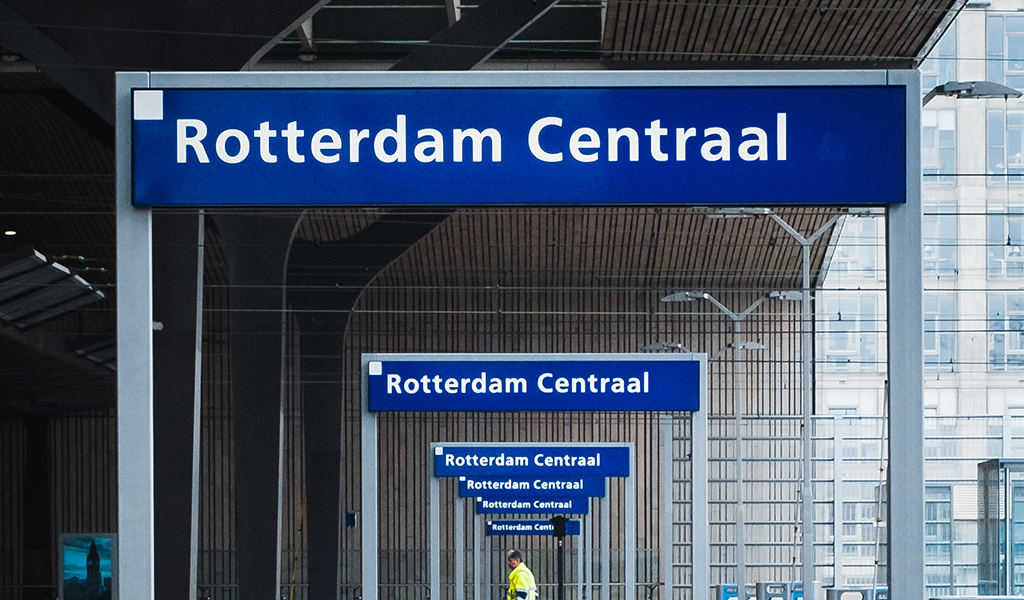
Explore museums
If you’ve got an interest or hobby, there’s probably a museum in Amsterdam dedicated to it. Whether you want to learn about chess, funerals, Heineken, houseboats or even the history of sex, there’s probably at least one of 75 to capture your attention, from the Rembrandt House Museum to Body Worlds , Amsterdam Heineken Experience and, of course, the sobering Anne Frank House , a hidden annex of an Amsterdam canal house where the iconic Jewish girl wrote her diary before being discovered and deported to a German concentration camp. This one is often sold out months in advance, but you can attend a two-hour guided tour of the South Amsterdam neighbourhood where she grew up.
Tip: Visit the tourist shops to get tickets in advance for all the tours and save time in lines for all museums. – Helen
Take a canal tour
If you have an evening free, why not take a stroll along the UNESCO-listed Canal Ring? This world heritage site is actually three canals that form a shape around the old city centre and is recommended by On the Luce as one of the best free things to do in the city, along with some lovely parks.
Visit the red light district for some taboo fun
Europeans are well-known for their liberal attitudes towards sex, and you’ll see that during your journey throughout Amsterdam, from its red light district (which is actually one of the safest parts of the city to its sex museums, such as Sex Museum – The temple of Venus and the Erotic Museum, an old warehouse in the middle of the red light district.

Take a day trip to Utrecht
Discover Domkerk’s cathedral in Utrecht
Just a half hour’s train ride from Amsterdam, Utrecht is a great day trip destination and one of the oldest cities in the country. Bonus: A lot of the attractions are free and the city is walkable.
The Domkerk is a mammoth church cathedral and a landmark at the heart of Utrecht. Its Gothic architecture serves as the backdrop to a beautiful courtyard. If you’re up for it, pay €9 to climb the 465 steps to the top of the tower.
If you’re a foodie, rejoice – there are tons of spots in Utrecht to have lunch or a snack , from cheap options to trendy cafes, suggests Olive Magazine.
Discover Rotterdam
Rotterdam is a famous port city that’s now a hub for modern architecture and the arts. There’s lots to see on a budget. Room Rotterdam recommends renting a bike for cheap or taking a guided walking tour to explore the waterfront, see amazing architecture and spot some of the best bars in town.
If you’d love to see some iconic Dutch windmills, head to the UNESCO village of Kinderkijk, where you can find 19 of them on the waterways.
You can explore The Netherlands on a modest budget and get almost anywhere you need to go on public transit – if you plan ahead, know where to look for deals and discounts, and stick to local haunts for deliciously cheap eats. You can even see unforgettable sites like the famous tulip fields, iconic windmills and charming canals on day trips to different cities.
Are you travelling to The Netherlands for the first time? Returning to a favourite destination? What are your best tips when it comes to saving for vacations? We’d love to hear what you’ve planned, or any trips we missed! Share your story in the comments and tell us what destinations are on your wish list. Our team love saving for holidays and we hope to inspire our members with exciting suggestions to spend your Caddle money.
